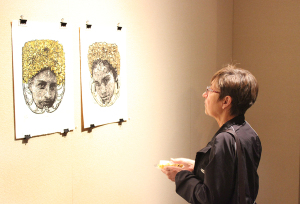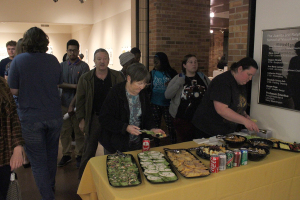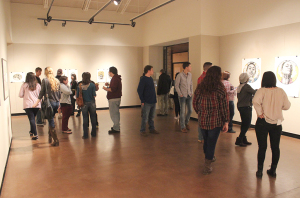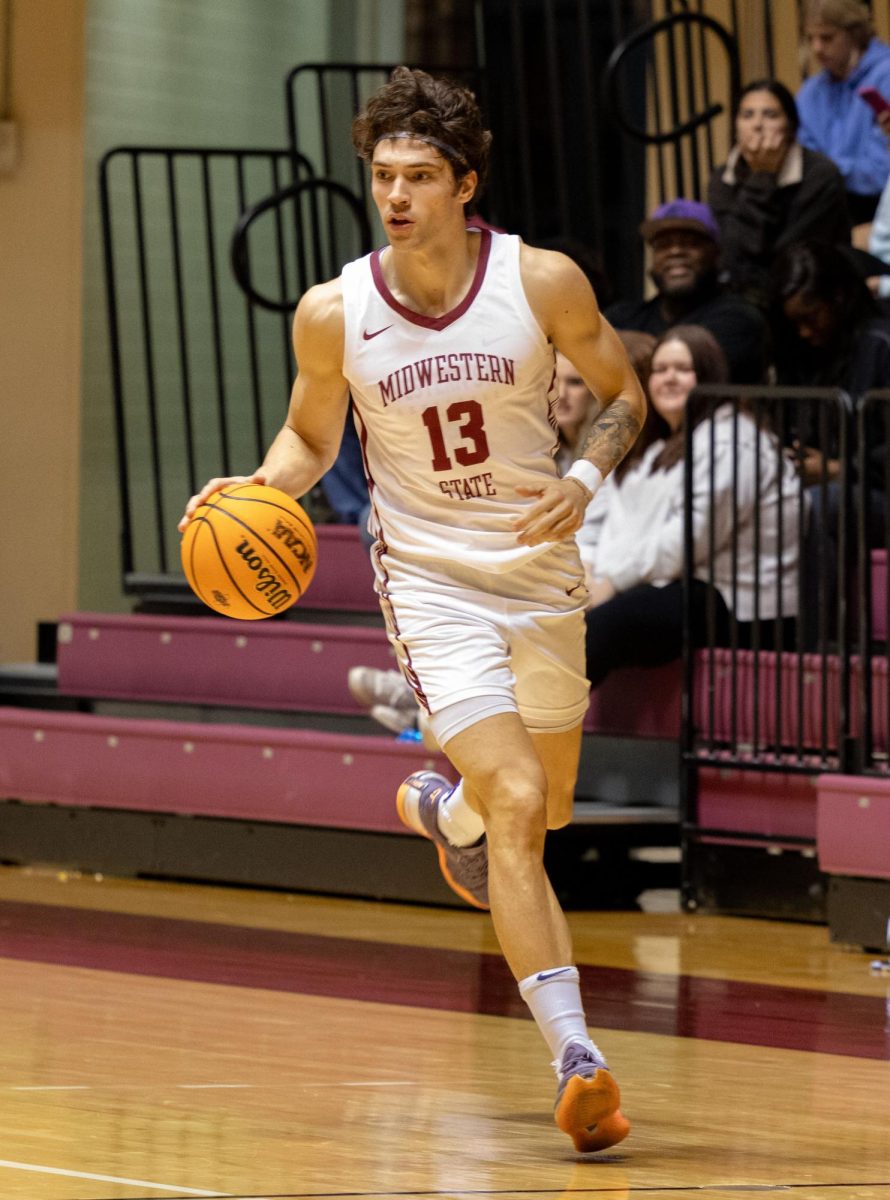
Featuring the indigenous young women of an untouched culture, the woodblocks printing by Irving Herrera went on display in the Juanita Harvey Art Gallery on Feb. 12.
The artistic maturity that was found within the tiniest nicks of a wood frame brought to life the model as well as the history of her culture
Herrera, from Oaxaca, Mexico, was not able to attend the show, as is customary of exhibits in the art department, due to traveling issues.
However, Gallery Director and Photography Professor Gary Goldberg said he hopes to have Herrera visit during the September-November months of next year to work as an artist residence. Goldberg initially met Herrera while he was an artist resident in Oaxaca.
“I kept seeing his work in galleries there, and I thought it was all very good,” Goldberg said. “I met him and I bought a print for myself and then asked if he was interested in having a show here.”
The show was relatively cheap to install – shipment of the pieces cost $150. Although, with the money saved in the Harvey and art foundations, coupled with the help of the O’Donnell Visiting Artist Workshop and Lecture series available to the department, the cost was trivial. This left more room for enjoyment of the gallery, both by students and faculty.
“I like that the artist allowed imperfections in his work, making it seem slightly off,” Holly Schuman, photography senior, said.

In studying Herrera’s artwork, viewers may see the finely etched, intricate cuts alongside his misshapen others. The effect closely mirrored that of an optical illusion, found within the lines of a woman’s face.
“The pose and the composition are what drew me in. This gallery is more stylized than others,” Emma Griffiths, art sophomore, said. “It’s nice to see different kinds of work, it really helps to broaden your horizons.”
Herrera not only brings depth to his gallery, but he also brings his characters to life – and in so, represents the live models that he is able to carve into wood panels within a matter of hours. Among his models, his wife, friends, and tourists he meets along the streets or in galleries. Each model portrays her state of mind through her eyes.
“I like the girls’ expressions,” Sandra Cruz, art sophomore, said. “The details and intricacies are the reason why I think this gallery is better than others, and why I would come to see it again.”
The majority of the viewers of the exhibition were in agreement: the artist may not have been in the room, but his presence was definitely palpable. His artwork was unmistakable and has won awards – twice the Young Creative Artist grant to finish a series – for being so.
“Herrera’s subject matter of the indigenous people and their heroic faces and cultural symbols brings about a strong graphic quality,” Goldberg said. “I love all the pieces, I don’t have a favorite.”

But among a crowd at the gallery, including Cruz and Schuman, there was a favorite: a woman with corn husks dressing her arms, her gaze that of cool assessment. The presentation that featured the portraits of the women of Oaxaca also featured crowns made of the bones of slaughtered animals, which perhaps was a clearer representation of the expressions found within the women’s eyes.
“I had to learn to find meaning within these pieces,” graphic design senior Emily Allen said. “I’ve loved art all my life, so I see beauty in everything. But it helps to see that if something is beautiful.”
The gallery will be open until Feb. 26.












